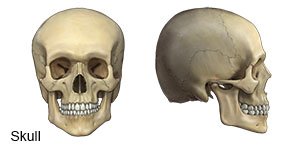Facial Fracture in Children
Medically reviewed by Drugs.com. Last updated on Aug 4, 2025.
A facial fracture is a break in one or more of the bones in your child's face. A facial fracture may also damage nearby tissue.
 |
WHILE YOU ARE HERE:
Informed consent
is a legal document that explains the tests, treatments, or procedures that your child may need. Informed consent means you understand what will be done and can make decisions about what you want. You give your permission when you sign the consent form. You can have someone sign this form for you if you are not able to sign it. You have the right to understand your child's medical care in words you know. Before you sign the consent form, understand the risks and benefits of what will be done to your child. Make sure all of your questions are answered.
Stay with your child for comfort and support
as often as possible while he or she is in the hospital. Ask another family member or someone close to the family to stay with your child when you cannot be there. Bring items from home that will comfort your child, such as a favorite blanket or toy.
An IV
is a small tube placed in your child's vein that is used to give medicine or liquids.
Neurologic signs
are also called neuro signs, neuro checks, or neuro status. During a neuro check, healthcare providers see how your child's pupils react to light. They may check your child's memory and how easily he or she wakes up. Your child's hand grasp and balance may also be tested. How your child responds to the neuro checks can tell healthcare providers how well your child's brain is working.
Activity:
Your child's healthcare provider will tell you when it is safe for him or her to get out of bed. A healthcare provider will help your child get up for the first time. If your child feels weak or dizzy, have him or her sit or lie down right away.
Medicines:
- Pain medicine may be given to decrease pain. Do not wait until your child's pain is severe before you ask for more medicine.
- Acetaminophen decreases pain.
- NSAIDs help decrease swelling and pain.
- Antibiotics help treat or prevent a bacterial infection if the bone broke through skin.
- A tetanus shot may be needed if he or she has not had one in the past 5 to 10 years.
Tests:
- X-ray or CT scan pictures may show broken bones and damaged tissue and blood vessels. Your child may be given contrast liquid to help the injured area show up better. Tell the provider if your child has ever had an allergic reaction to contrast liquid.
- An ultrasound may be done to check for damage to your child's facial bones and tissue.
Surgery
may be needed to return your child's bones to their normal position if the fracture is severe. Pins, plates, and screws may be used to hold broken bones together. Surgery may also be needed to fix eye, nose, mouth, nerve, or blood vessel damage.
RISKS:
Even with surgery, your child may have uneven facial features, bulging eyes, vision changes, and permanent blindness. Bone and tissue grafts may move out of place and require another surgery. Plates and screws used to fix your child's bones may become infected or need to be replaced. Your child may develop a life-threatening blood clot.
CARE AGREEMENT:
You have the right to help plan your child's care. Learn about your child's health condition and how it may be treated. Discuss treatment options with your child's healthcare providers to decide what care you want for your child.© Copyright Merative 2025 Information is for End User's use only and may not be sold, redistributed or otherwise used for commercial purposes.
The above information is an educational aid only. It is not intended as medical advice for individual conditions or treatments. Talk to your doctor, nurse or pharmacist before following any medical regimen to see if it is safe and effective for you.
Learn more about Facial Fracture
Care guides
Further information
Always consult your healthcare provider to ensure the information displayed on this page applies to your personal circumstances.
